Concluded Projects
Virtual Reality Language Learning (71576.1 INNO-SBM)

abc Sprachschulen detected several issues to learn a foreign language: (i) lack of time to personally attend courses; (ii) current teaching material focuses on understanding a language (listening), but little is done to encourage free speaking; (iii) current teaching material is inflexible and does not automatically adapt to a learner’s progress (e,g,, to levels below C1/C2); (iv) successful language training should not just teach and practice a new language, but should also partially transfer the culture of this language domain: “like being there”.
Based on the above problems, we envision a highly immersive and adaptive environment that can be accessed through various technical means like the increasingly available Virtual Reality (VR) technology. VR then transports the language and partially the culture in an authentic visual atmosphere which also encourages students to speak to AI avatars within this virtual environment.
Virtual Reality Extension for Digital Twins of Machine Tools (VREX-DTMT) (Innosuisse 36484.1 IP-ICT)
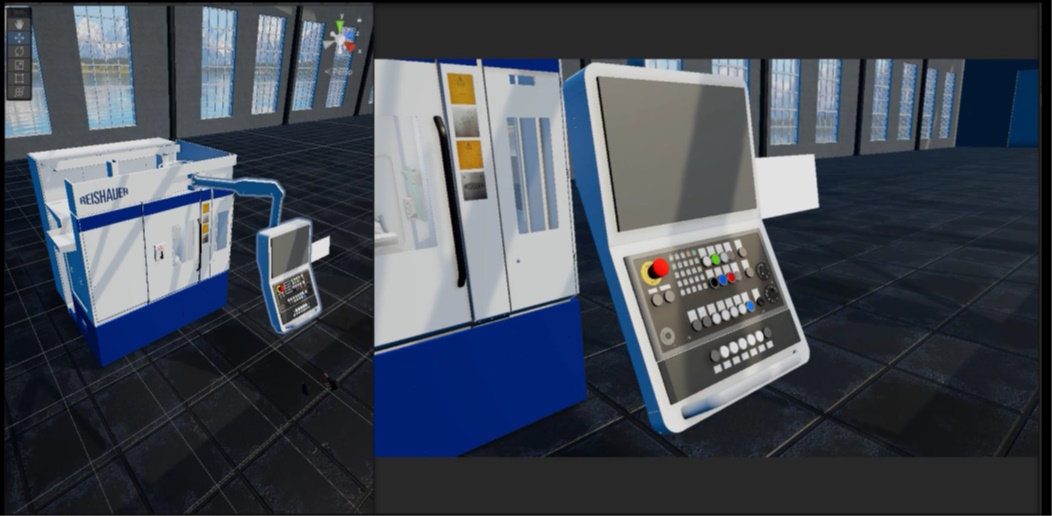
The digital twin, which is a virtual representation of processes, products, and machines, provides new opportunities of value creation, with an expected worldwide market size of USD 48.2 bn by 2026 at a CAGR of 58% [1]. This is particularly relevant for the manufacturing sector, where high potentials are envisioned, but commercially successful implementations are still rare, with a few famous examples, such as Rolls Royce’s power-by-the-hour service.
Within this project, we attain these potentials in the Swiss machine tool industry by developing four digital twin-based solutions that increase an asset’s productivity along its life cycle. This includes virtual process setups and collision detection, as well as Virtual Reality (VR) operator training and support (for maintenance and repair). We aim to achieve this in a consortium of three implementation partners including Siemens, a machine control supplier, Reishauer, a machine tool manufacturer and partner of Siemens, as well as Sensoryx, a startup company for VR technology.
The implementation partners expect significant benefits by implementing the results of this project, with an expected yearly revenue increase of CHF 24 Mio. by 2027. In detail, Reishauer aims to extend their digital business by providing the solutions developed in this project in a "pay-per-use" model. Further, Siemens intends to extend the business with existing partners - including Reishauer - and to win new customers through offering the VR extension as part of their digital twin of machine control systems. Finally, Sensoryx aims to increase their B2B business and establish themselves the key VR technology provider in the manufacturing sector.
Aside from the expected revenue increase, this project will virtualize processes that are currently conducted with real industrial equipment and thus lead to substantial energy savings, while fostering a sustainable, human centric, and inclusive digital transformation in the manufacturing sector.
Atlas Recorder (66423.1 INNO-ICT)
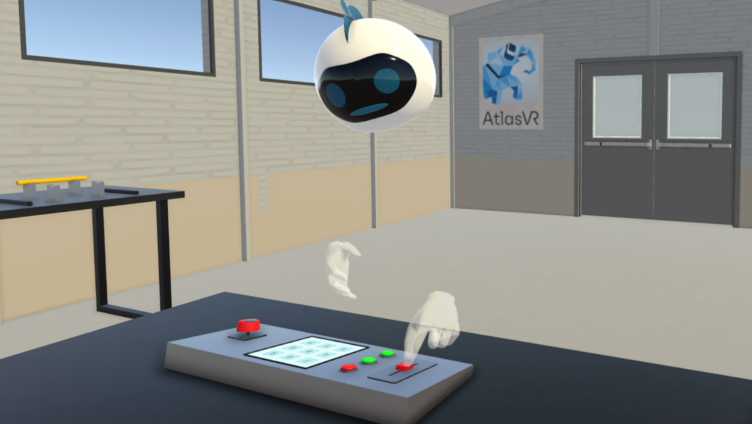
Training in virtual reality (VR) provides significant benefits over traditional methods, yet challenges persist in scalability and fast implementation. To address this issue, we propose a concept enabling the acceleration of training sequence creation by allowing to record reference motion directly in VR. A knowledgeable expert can thus undergo the training sequence while their motion is recorded, creating an example that naive trainees can follow. To follow pre-recorded sequences, a replay function is necessary which can be realized in two ways. First, it can simply show the motion of all moving or relevant virtual objects, only visualizing the motion without knowledge of the behavior of the respective virtual objects. Alternatively, only the virtual interactions of the expert (i.e. from VR controllers) are recorded and played back through a simulation. This approach may be more computationally expensive, but it provides richer information on collision, interactions among objects, and their velocity.
Our method has the potential to significantly reduce the effort required to create VR training sequences, allowing for more rapid implementation and scalability. It also has the potential to increase the consistency and quality of training by providing a reliable reference motion for trainees to follow. Future work could explore the effectiveness of this approach in various contexts and investigate more optimization strategies to improve efficiency and reduce computational cost.
Die Einbindung eines realen Werkzeugs in eine virtuelle Schulungsumgebung der Rohrverbindungstechnik (Innosuisse 43670.1 INNO-ICT)

A virtual learning learning environment offers several advantages over a traditional training. However, it is difficult in such a virtual environment to generate forces that could increase immersion for the training. Thus the goal of this project is to integrate real tools in the virtual environment to generate more realistic training scenarios.
Collaborative Virtual Reality for Designing and Optimizing Production Facilities with a Focus on Critical Large Scale Operational Processes in the Virtual Twin (innosuisse 38431.1 IP-ICT)
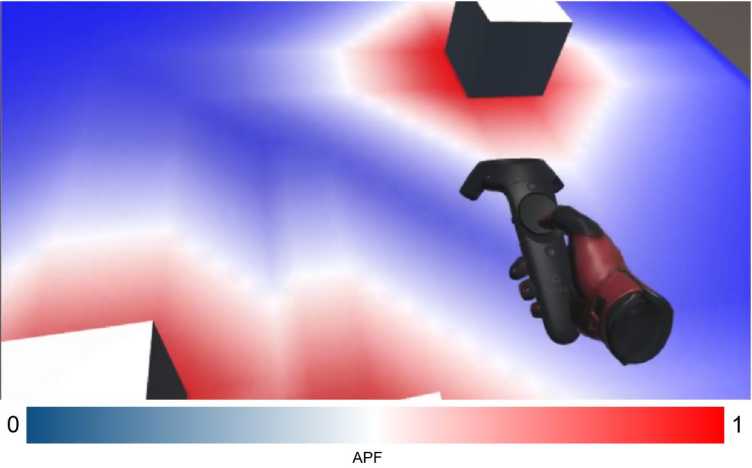
The goal of the project is to develop a virtual environment based on artifical potential fields that allows a multi-user real walking for planning and evaluating large scale operational processes using the digital twin.
VR-MTM (Eurostars E! 113504 VR-MTM)
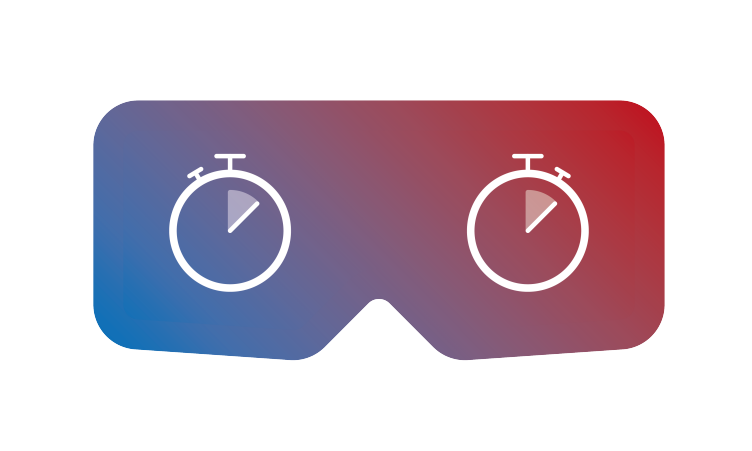
The goal of the project is to develop a Virtual Reality based software to automatically assess manual activity in the production field using Methods-Time Measurement, in such a way that a wide range of complex activities (e.g. human-machine interaction), including walking and multi-user collaboration in production facilities, can be easily assessed, without the need of physical mock-ups. This will tremendously reduce the time demand for optimizing manual activities in manufacturing processes.
MAPVI (MAPVI (SNF "Barrierefreie Besprechungszimmer für sehbehinderte Menschen"Project number: 200021E_177542")

In recent years, the inclusion of persons with visual impairments (PVI) is taking tremendous steps, especially with regards to group meetings. However, a significant part of communication is conveyed through non-verbal communication which is commonly inaccessible, such as deictic pointing gestures or the mimics and body language of participants. MAPVI proposes new technologies on making meetings more accessible for PVIs. Therefore, we explore which relevant information has to be tracked and how those can be sensed for the users. Finally, those captured information get translated into a multitude of haptic feedback to make them accessible.
The project is in collaboration of ETH Zurich (Switzerland), TU Darmstadt (Germany), and TU Linz (Austria)
More information about MAPVI
external page DownloadOfficial MAPVI Project Homepage
Integrating neuropsychological aspects for redirection in virtual environments (SNF CR23I2_162752)
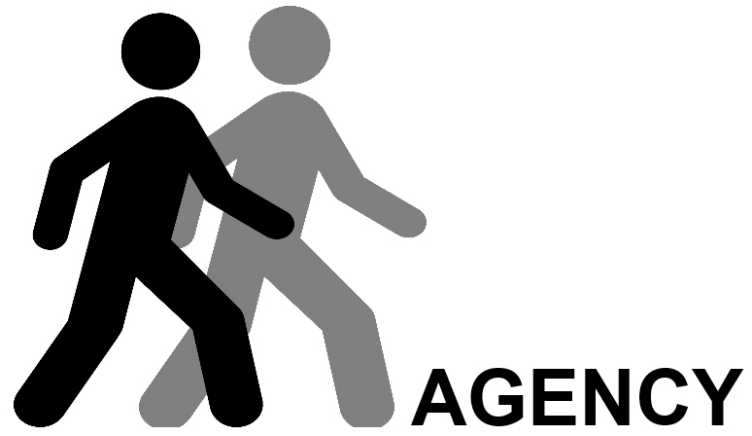
The results of the proposed experimental series will allow to optimize currently used redirection algorithms by respecting the underlying neuropsychological constraints. At the same time, the first-time ever use of virtual environments for the study of what has been labeled “perhaps the most reliable phenomenon in all psychological research” [Dember & Richman 1989], spontaneous alternation behavior, is expected to significantly enhance our understanding of serial responding and “spontaneity”. The planned experiments will contribute to novel insights into cognitive processes guiding an apparently simple motor act, i.e. human walking,- from memory to bodily self-awareness.
User Interfaces for Brainstorming Meetings with Blind and Sighted Persons (DACH 1) (SNF CR21I2L_138601)

The following research question is addressed in the proposed project: How can appropriate IT based means improve participation of the blind in workplace situations that require intense cooperation with the sighted? We plan scientific contributions in the areas of (a) novel interaction devices and (b) novel interaction techniques, combined with research in the area of (c) eAccessibility. Well matching research labs with considerable experience had to be found for each of the areas (a) - (c); they turned out to be spread over all three countries participating in the ‘lead agency’ cooperation line: Switzerland (ETH Zurich), Germany (TU Darmstadt), and Austria (TU Linz).
The project is funded by the Swiss SNF, the German DFG, and the Austrian FWF.
Development and Validation of a Virtual Reality Simulator including Haptics and Walking for Studies in Consumer Behavior Research (SNF 205121_153243)
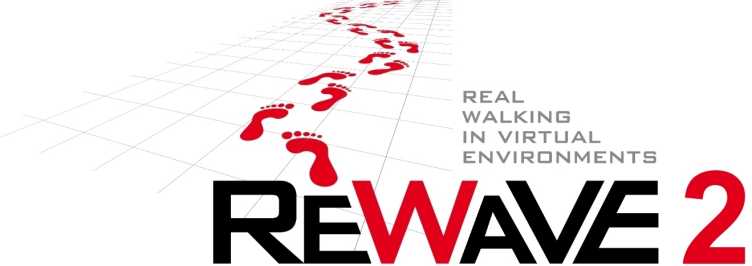
The goal of the proposed project is to realize a new dimension of consumer behavior studies by the use and further development of a VR simulator. To allow studies in simulated shops with real walking, grasping, and detection of the focus of interest, an important aspect will be the analysis and validation of the user trajectories in the VE and the influence of VE “compressions” and the results of a study. After a verification and comparison with traditional evaluation methods, a new tool for consumer behavior research should be provided that greatly increases the efficiency of user studies and even allows study setups that have been impossible so far. The proposed research project thus brings together the challenging research fields of Virtual Reality (VR) and Consumer Behavior (CB), who both will significantly benefit from this envisioned common research goals.
Immersive Virtual Environments (IVEs) Allowing Optimal Free Walking Experience in a Limited Physical Space (SNF 200021_127298)

The goal of the proposed project is to realize a real sensation of walking within a holistic approach. New basic algorithms to predict the users’ behaviors within the given context of a virtual environment will be developed and verified. Within this new approach, the user is really walking on a plane surface, while all other perception channels – among others in particular the visual sensation – are addressed by the virtual environment. After developing the proposed system, basic user studies will be done in the new system on how the human perception could be influenced in such a way that the virtually unlimited space can be compressed to a physically limited space with optimal free walking experience.
ViRTUE, funded by USZ Foundation

We built a prototype of a virtual reality simulator VIRTUE that allows healthcare providers to see germ propagation by unclean hands. The submitted project builds on that prototype.
MERCO - KTI 16251.2 PFES-ES

The goal of MERCO is to realize a next-generation remote collaboration system by also transferring body postures, deictic gestures, and other non-verbal communication elements (work space) and by combining this geometrically correct with the shared content of a digital whiteboard (task space). Interative methods and tools, technical solutions, and experimentally validated knowledge from MERCO will enable more natural and efficient networked team meetings. A particular focus will be given to early phases of product design.
CollaBoard - KTI 9017.1 PFES-ES

Within the EUREKA project 'CollaBoard', the Virtual Reality group develops, designs, and evaluates a setup for the improved support of collaborative work between geographically distributed teams. If two CollaBoards are interconnected via a network, the groups will have a common interactive vertical digital workspace. Superimposing the live video of the remote partner (people on content) also allows the transfer of Meta information such as gestures, etc., resulting in a more intuitively distributed collaborative teamwork.
CollaBoard is an european research project (EUREKA Projekt Nr. E! 4066). Swiss project activities are funded by the CTI (Commission for Technology and Innovation) of BBT (Bundesamt für Berufsbildung und Technologie) under KTI grant No. 9017.1 PFES-ES).
DigiSketch - Hasler Foundation

Within this project, a technical solution should be realized which allows an integration of analog working methods into a digital environment. A prototype will be realized, which will be used later on for education purposes and for the demonstration how analog and digital working methods were combined.
GRID - Internal funding
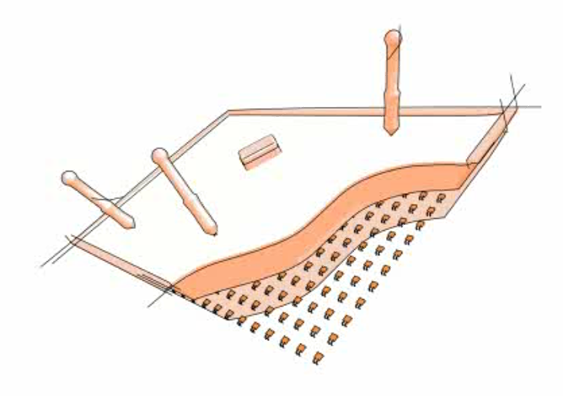
GRID is a technology which enables tracking of multiple devices on standard LC-displays. This technology uses the fact that the LC-matrix of an LC-display is mostly transparent to infrared light. By using active infrared interaction devices it becomes possible to radiate through the LC-matrix and detect the radiation behind the screen. Detection of the infrared light is done by using an array of infrared sensors. In order to distinguish between different devices a synchronization technique makes sure all the devices are interrogated in different timeslots.
COCOL - ETH Internal Funding "FILEP"

A global market as well as a globally distributed product development process requires engineers with competence in globally distributed teamwork. Due to the continuously increasing time pressure, collaboration in teams with physical presence will be replaced by collaboration over networks in the future.
Modified working methods as a result of a new collaboration technologies cannot be taught theoretically, but have to be experienced by using the technology directly. In addition, the benefits of of using new collaboration technology can be experienced, thus generating acceptance for the new technology. The proposed project allows to transfer knowledge, which cannot be taught theoretically. This practical experience will create acceptance for net-based work, will generate the knowledge how to use the technological means, and will teach how the technology influences typical business processes. This practical experience will be supplemented by the theoretical knowledge taught in the lecture.
cocoon - CTI Project Funding KTI Nr. 8418.1 ESP-ES

Communication and Collaboration over Networks
Globally distributed development processes require from Swiss industry an international and interdisciplinary teamwork. Within the project
industrial business processes are investigated and optimzed. The competitiveness will be strenthened by the development, the introduction, and the teaching of new methods; and by a useful enhancement of the communication and collaboration infrastructure.
Goals of the project are: Increase of action and reaction speed of the development process, shortening of 'time-to-market', better integration of customers and partners, saving time and travel expenses, improvement of communication and collaboration.
CRION - CTO Project Funding No. 6349.1 IWS-IW

Scope of the "CRION" project is the development and the test of adigital innovation and communication environment. This will be used in the early stages of the product development process in order to shape them more efficient and more reproducible. The new environment consists of hard- and software components and is supplemented by new methods for innovation and creativity. The new workspace will support individual work and teamwork as well the work in networked teams. An inportant capability of CRiON is the possibility of a simultaneous interaction (writing, sketching, etc.) of all participating team members in order to realize a realistic creativity session.
With the developed technology, the handling of the computer is done with means that are typically used in 'analog' sessions: pencils, erasers, rulers, etc. Thus a complete digital team session is possible from the very beginning.
CO-ME NSF Research Grant
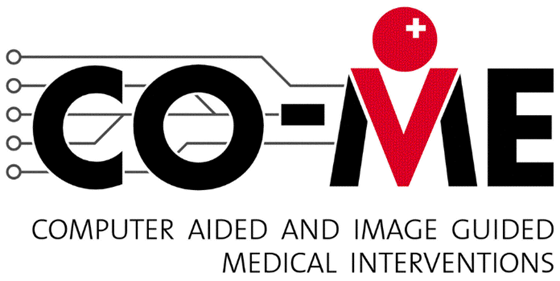
The Virtual Reality group takes part in an NSF research project in the medical sector. The main task is to develop a new haptic device for the training of surgeons. Within this task, two possible concepts are further developed: a mesh-like device with the capability to generate objects even with overhanging surfaces, and a glove-like force feedback device, which is based on completely actuation concepts. Here, so-called electroactive materials will be used to miniaturize the size of the exoskeleton.
blue-c II - ETH Internal Research Grant No. 0-21020-04

Development and Implementation of a Novel Collaboration Platform Supporting Local and Remote Collaboration
Five ETH Zurich professorships were involved in the blue-c II project. The Virtual Reality group research activities within the project focused on the design and implementation of the HoloPort, a groupware device that support remote collaboration processes of geographically distributed teams. By using the HoloPort, remote collaborators have the sensation of sitting virtually at the same conference table. Due to an elaborate camera positioning, the HoloPort further supports gaze awareness and eye contact between remote people.
blue-c - ETH grant No. 0-23803-00

Immersive VR Projection System with Simultaneous Image Acquisition using Active Projection Screens
The blue-c project was an internal research project of ETH Zurich with the goal to build collaborative, immersive virtual environments which integrate the representation of real humans as three-dimensional objects. The first of the two installations that were build is a three-sided spatially immersive back projection system. Sixteen cameras are integrated in this installation in order to capture the silhouette and texture of the user. A 3D-representation of the user is generated in real time and transferred to the remote installation, where it is combined with the virtual world and presented to the remote user. The remote user is also captured with sixteen cameras and his 3D-representation is transferred back to the first installation. The interconnected installations enable multiple users to interact and share applications simultaneously. The possibility to see the remote user in conjunction with the application gives a high sense of presence.
Four institutes were involved in the blue-c project. The Virtual Reality group was responsible for the hardware setups, namely the spatially immersive projection system and the image acquisition system. The main challenge associated with the hardware was to combine the projection with the image acquisition. In order to meet this challenge, electrically switchable "phase dispersed liquid crystal (PDLC)" glass panels were used as projection walls. The panels are switched to transparent for acquisition and opaque for projection. The switching is repeated 62.5 times per second. The cameras, which are located outside of the projection room, can acquire an image of the user through the PDLC glass panels during the transparent states. The active stereo projection system is only active when the glass panels are opaque.
BUILD-It TN - ETH Internal Funding
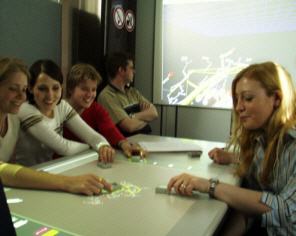
Buildit-TN (Teaching Network) is a project that supports the use of new technologies in education by developing a network and supporting the dialogue between the teaching staff of different divisions of the ETH. Primarily those who are responsible for teaching and education benefit from this network. The technology to be used in this project is the Buildit-system, and for the dialogue the internet is used in combination with regular meetings. The following institutes were involved in the project
Build-It
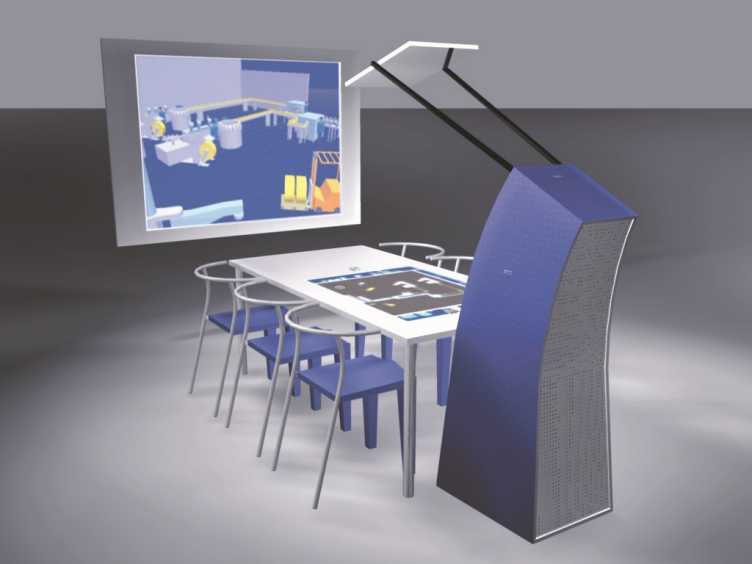
By using a new, video-based interaction technology it will be evaluated, how the concept stage in the product development process and the teamwork can be improved with this new media. In the conventional design of large plants a brake in the logical chain occurs when changing from the 2D layout to the CAD system or from the sketch to the CAD system, respectively. Efficient media and tools are missing to visualize plants and to discuss them with the customer or with other team members. For the visualization often wooden or plastic models are used which have to be transferred to CAD models afterwards. In order to avoid this break in media a video-based interaction technique is used, which allows a sketched layout as well as a brainstorming in a team, collaborative work of teams and an electronic capturing and processing of the generated documents.